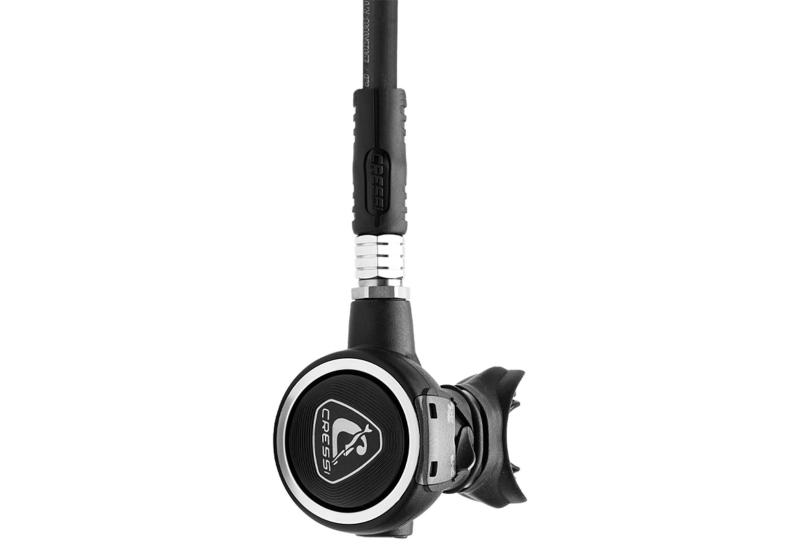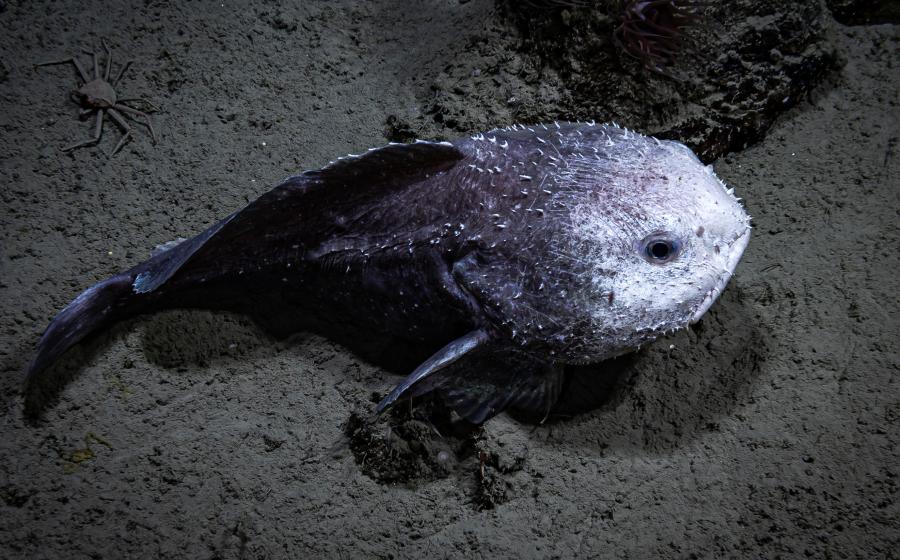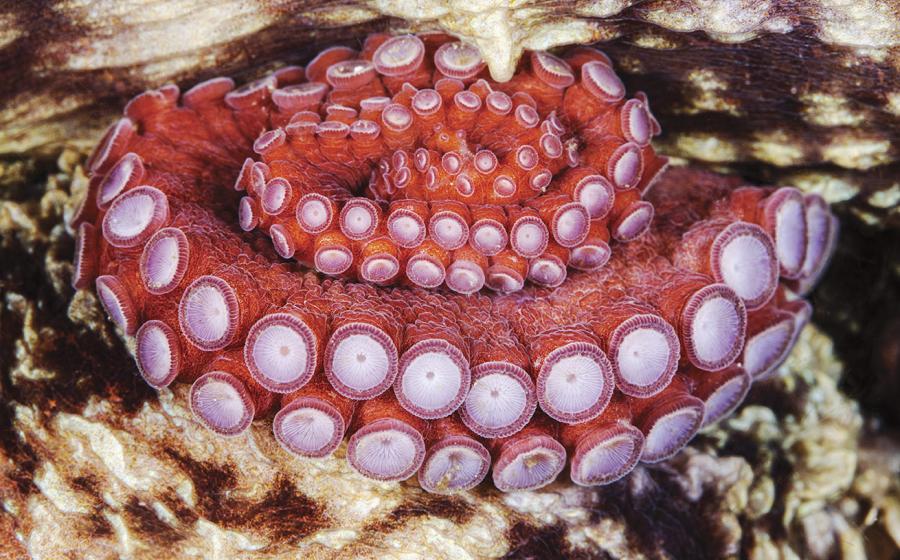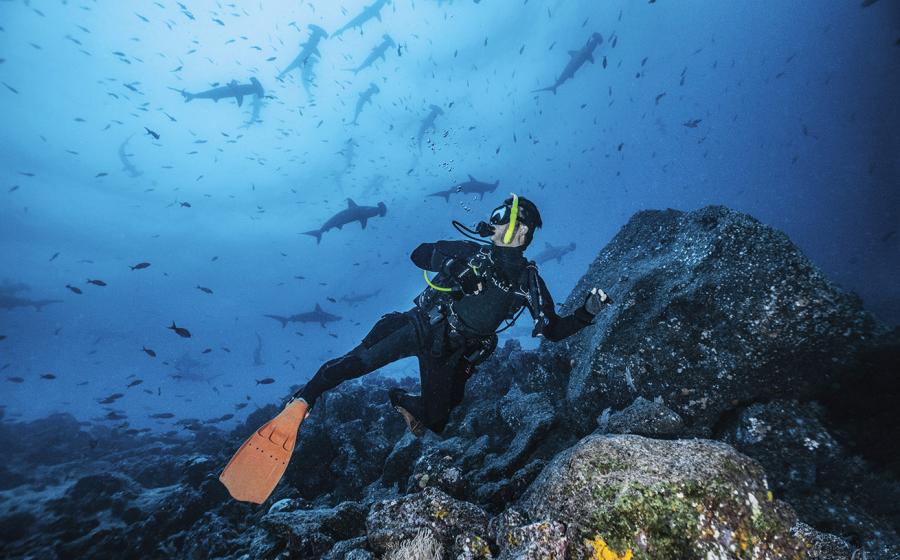Best Tips For Buying the Perfect Scuba Diving Mask
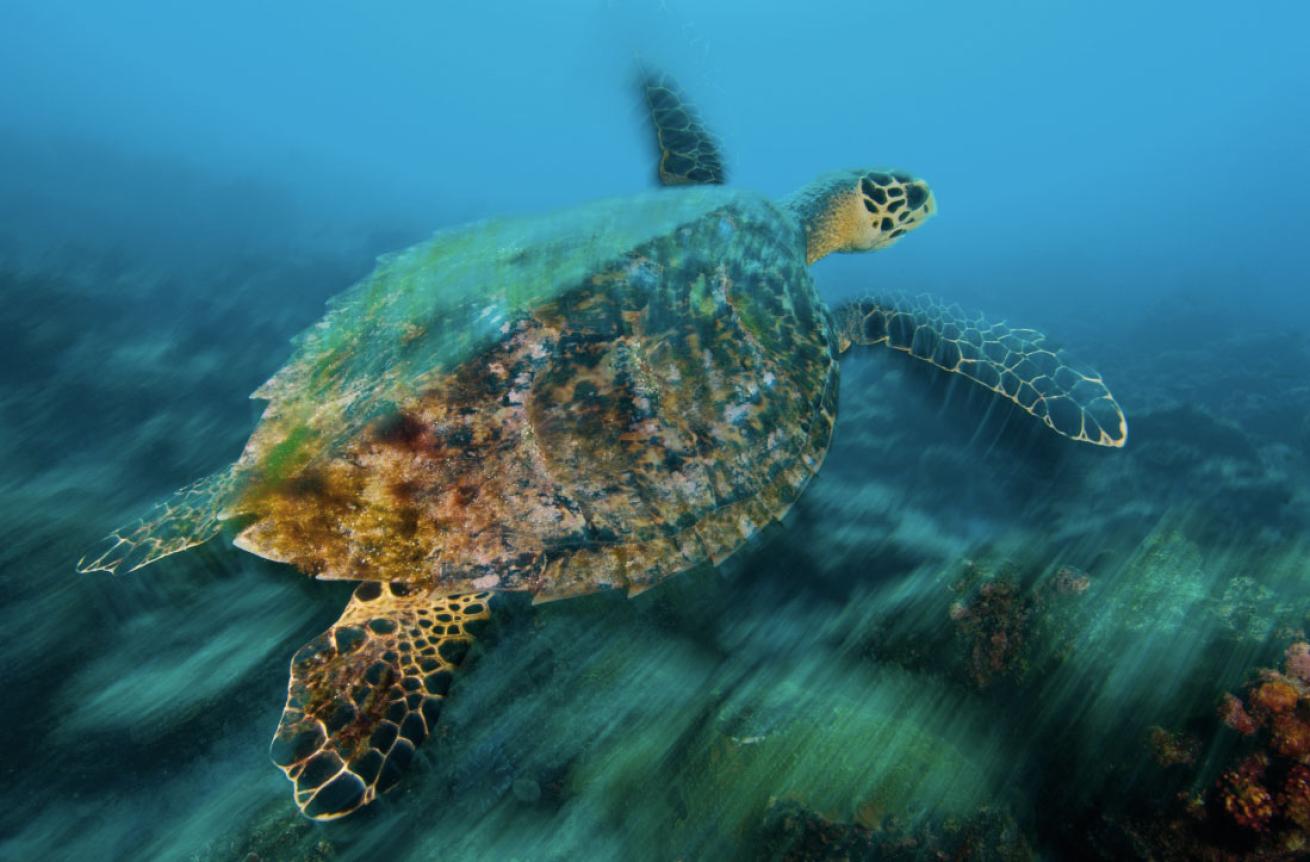
Courtesy CressiGetting a good-fitting scuba mask is paramount when it comes to your comfort underwater. But if you're confused about a dive mask's features, we've got some tips to help you sort through all the options.
Need help finding a well-made scuba diving mask that's perfect for you? Consider these features when shopping for your next window on the underwater world.
THE RIGHT FIT
No matter how good-looking a mask might be when you see it displayed at the dive store, if it doesn't fit your face it’s not the right mask for you. If a mask fails to seal or is uncomfortable when you’re in the dive shop or store, imagine how it will feel when you're actually underwater. So keep trying on masks until you find the one that gives a perfect seal along the whole length of the skirt and that doesn’t rub or press at the nose pocket, frame or lenses. Read our step-by-step guide for getting a good mask fit while you're in the store.
FORM-FITTING MASK SKIRT
Fit is extremely important, but what the labels you're seeing, such as Liquid Silicone, LiquidSkin, TruFit and High Seal? All mask skirts are made out of silicone, and these scuba-gear-manufacturer marketing terms are designed to tout the comfort of a particular mask. The thickness and suppleness of the silicone varies from mask to mask, and the only way for you to know if a mask skirt is going to be comfortable against your facial skin. Some skirts mold to your face like a second skin, creating a comfortable, watertight seal. Others hurt your face, with stiff edges that dig into your skin. Some manufacturers add different surface textures in the forehead and cheek areas to further increase comfort and improve the seal. Ribs molded into malleable silicone provide a nice balance of softness and shape, resulting in a pliable skirt that molds to your face and creates an excellent seal. Avoid masks that have plastic skirts, like those found in big-box stores. You may think the price is right, but your comfort will suffer.
SKIRT COLORS
Clear skirts allow a lot of light in, creating an open and airy at-depth effect. Black skirts, on the other hand, block out any reflective glare. So, what should you get? Clear skirts can be a real plus for divers who feel claustrophobic or when you're diving in murky or green water. However, when diving in bright tropical waters over a white sand bottom, all that reflective light streaming through a clear skirt can be blinding. Black skirts, while a bit more claustrophobic, are great at blocking this reflective light, which is why underwater photographers love them. And what about the rainbow of colors offered by mask manufacturers? That's purely a matter of personal preference.
FIELD OF VIEW
What do manufacturers mean when they say a mask has a good field of view? Optimizing your field of view, both horizontally and vertically, is the primary goal of a good mask. When you try on a different masks, you'll notice that they'll differ in how much you can see side-to-side and up and down, when you're looking straight ahead. A good downward view is nice to have — after all, when underwater, you look down to find your gauges, buckles, D-rings, BC pockets and weight-ditch handles. Also, if you feel at all claustrophobic when trying on a dive mask, you may find selecting a mask with oversized lenses can help you feel less hemmed-in.
LOW VOLUME VS HIGH VOLUME
Mask volume refers to the amount of air space inside the mask. Like a clear skirt and expansive field of view, a high-volume mask can make it seem as if you're viewing the underwater world through a giant picture window think bay window vs porthole. The downside is that they take a little more effort to clear, but if you mostly dive in situations where you can take your time descending — and equalizing — you may prefer a high-volume mask. Low-volume or low-profile masks sit closer to your face and can be quickly cleared of water. They also create less drag when cruising through the water column, and they tend to provide a wider field of view because the front lenses sit closer to your eyes. Masks designed for freedivers have extremely low volume, with stripped-down, streamlined designs that offer great ease of clearing and equalizing, but may not be good for new or claustrophobic divers.
SINGLE, DUAL AND MULTI LENSES
Masks come in one-, two-, three-, or four-window versions. One-window masks have a single pane of tempered glass. Two-window masks have two lenses in the front of the mask, joined by a nose bridge. Three-window masks consist of a single front pane (like the single-window) and two side lenses. Four-window masks are made with two lenses in the front and two lenses on the sides. The choice between these types is partly a matter of personal preference and partly a consideration of the type of diving you do. Single-lens masks offer the widest uninterrupted field of view because they don’t have the obstruction of the nose bridge on a dual- or multi-lens mask. Single-lens masks generally have somewhat larger volume. Multi-lens masks, especially dual-lens models, generally have a smaller internal volume than single-lens models because their smaller size can allow them to be shaped closer to the diver’s face. As discussed above, a smaller volume makes it easier to clear and equalize. But they also can be fitted with corrective lenses, and if this is a requirement for you, confine your search to dual-lens models. The use of side windows increases peripheral vision and lets in more light, a good thing for divers prone to claustrophobia. However, the intersection of front and side lenses sometimes creates blind spots and distortion at depth.
HIGH-END LENS GLASS
Some masks have gone a step or two above standard tempered glass, offering advanced glass composites that deliver high levels of visual clarity, but generally speaking, almost all scuba masks have lenses made from safety or tempered glass — similar to that in a car's windshield — that will not shatter on impact.
BUCKLE/STRAP SYSTEMS
The buckle systems on most modern masks mount on the skirt rather than the frame. This offers a number of advantages, including improving the range of motion for strap positioning, and enabling the buckles to be folded flat against the lens for stowage or packing.
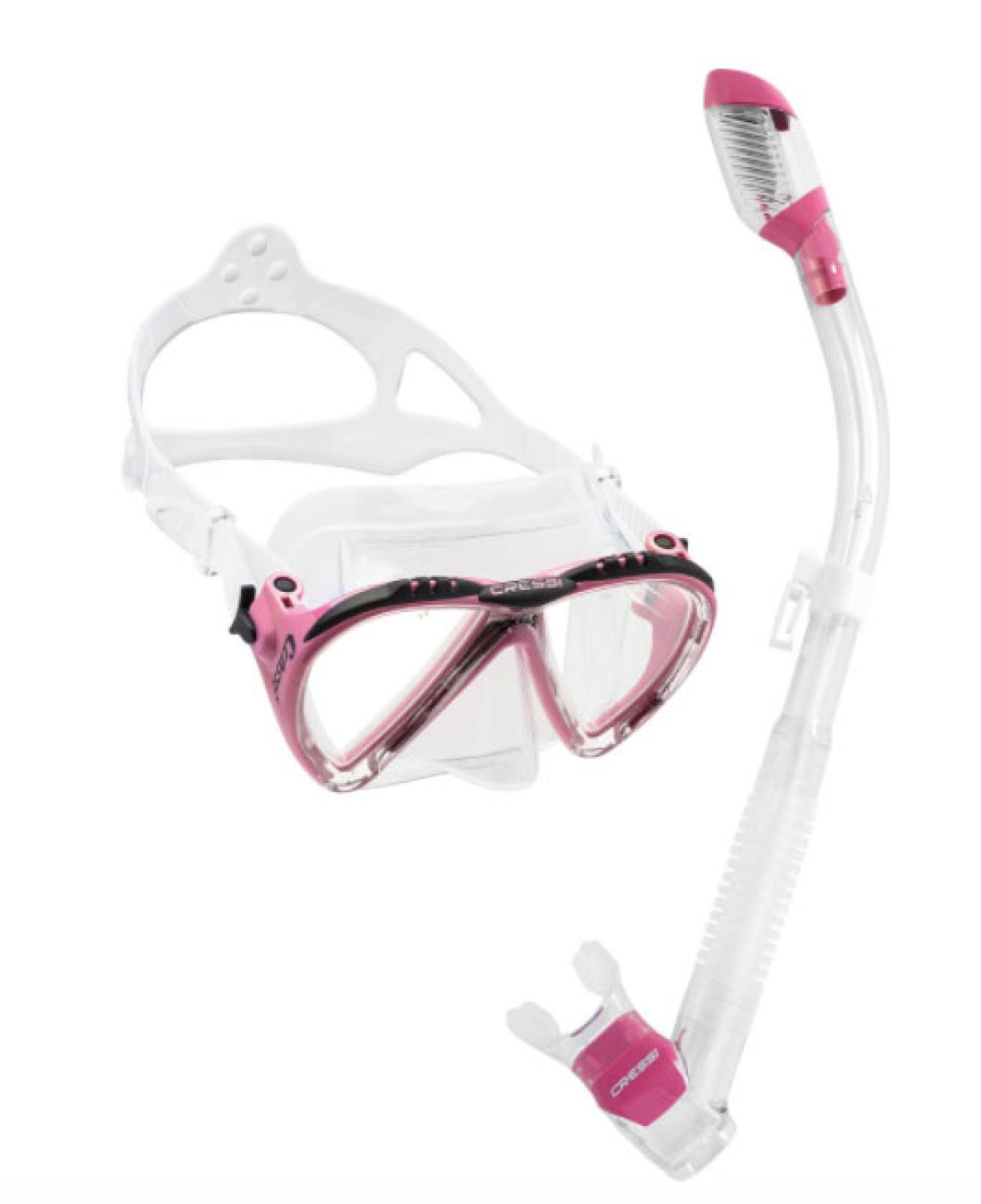
Courtesy CressiAnother consideration when purchasing a mask — some are better choices for you based on your face shape. Cressi's Lince is designed for those with narrower faces. Also shown: Cressi's Supernova Dry snorkel. Find lots of mask choices at cressi.com.
THE STORE TEST
With so many choices to be made regarding the features of a dive mask, how can you find the perfect one that is appropriate for your primary type of diving, face type and personal preferences? Remember, a good fit is paramount. While in the store, perform the "dry test":
1. Look up and place the mask on your face without using the strap. It should rest evenly with no gaps. If it slips off, it's too large for you; if it hits any part of your face, such as your cheekbones or tip of your nose, it may be too small for you.
2. Place a regulator or snorkel mouthpiece in your mouth. Does the mask still feel comfortable? Do you see any gaps?
3. Look forward. Place the mask on your face without using the strap and gently — not forcefully — inhale through your nose. The mask should seal easily on your face. Repeat the sniff test with a mouthpiece in place. If the mask falls off during this test, put it back on the shelf.
4. Now, adjust the strap and put it on your face. Make sure the nose pocket doesn't touch your nose and that the skirt feels comfortable on your cheekbones and upper lip. If any part of the frame is digging into your face, take this mask out of the running.
5. Can you easily reach the nose pocket to equalize? If the nose pocket is too large for you, imagine how frustrating it will be to perform this underwater.


